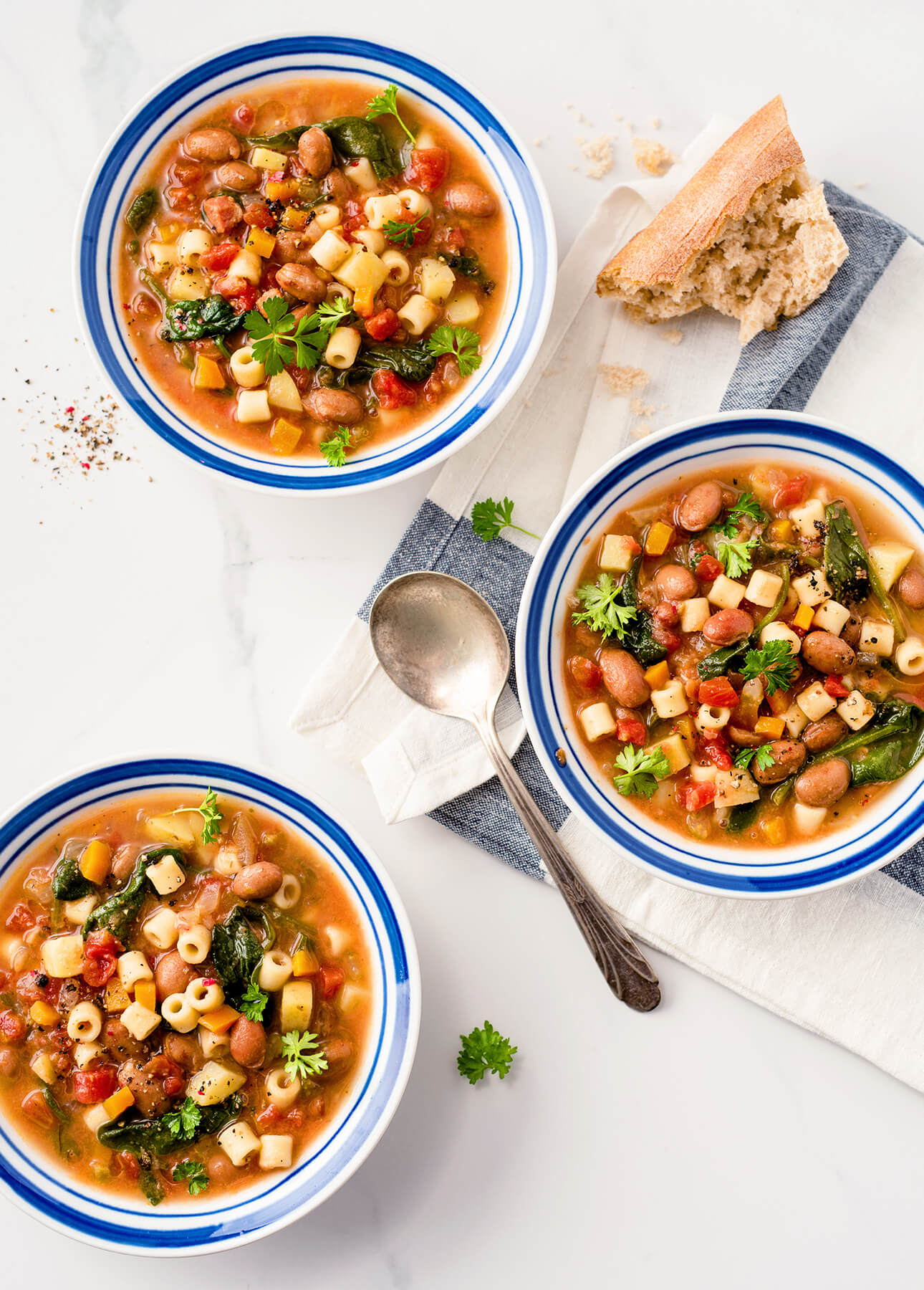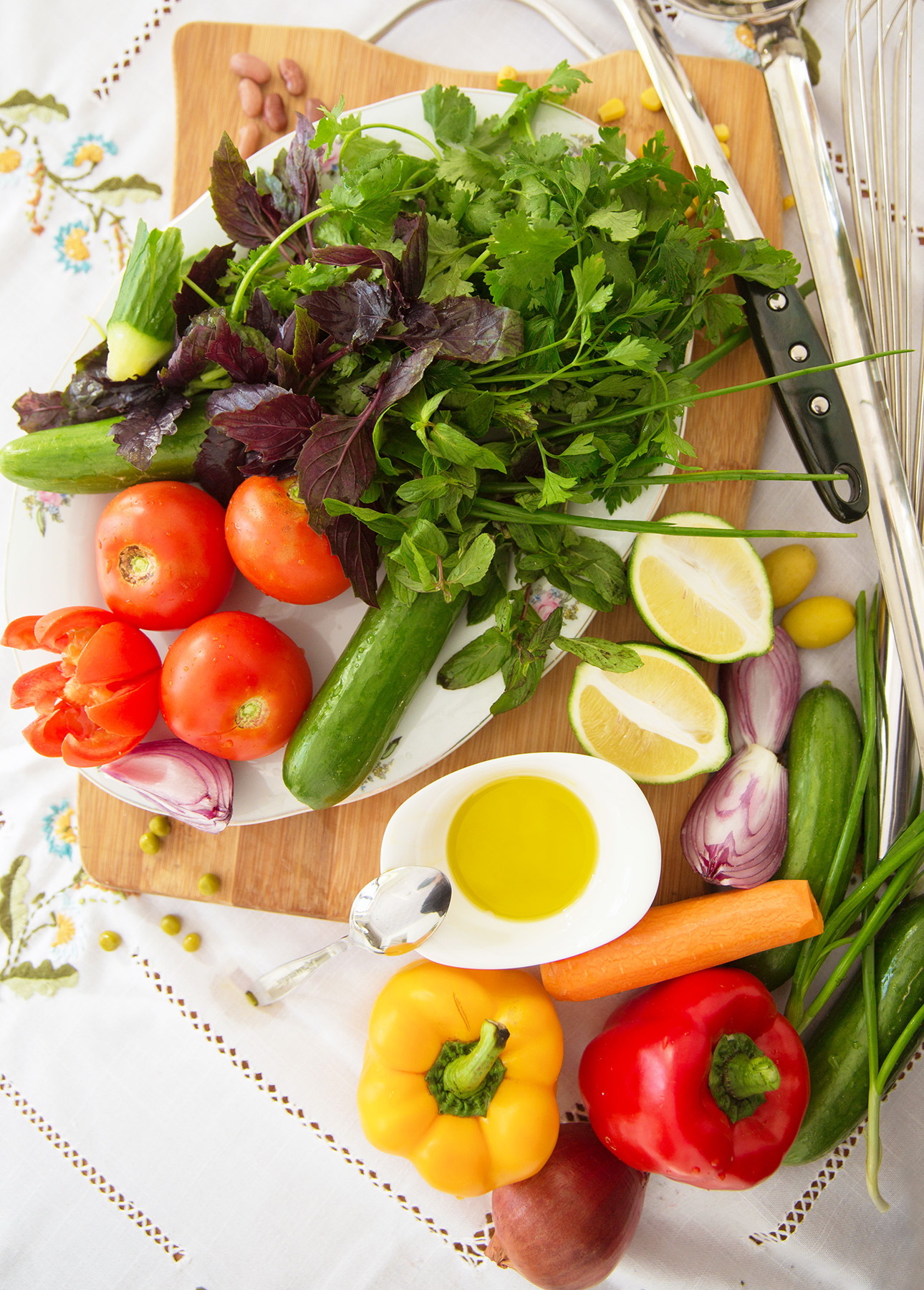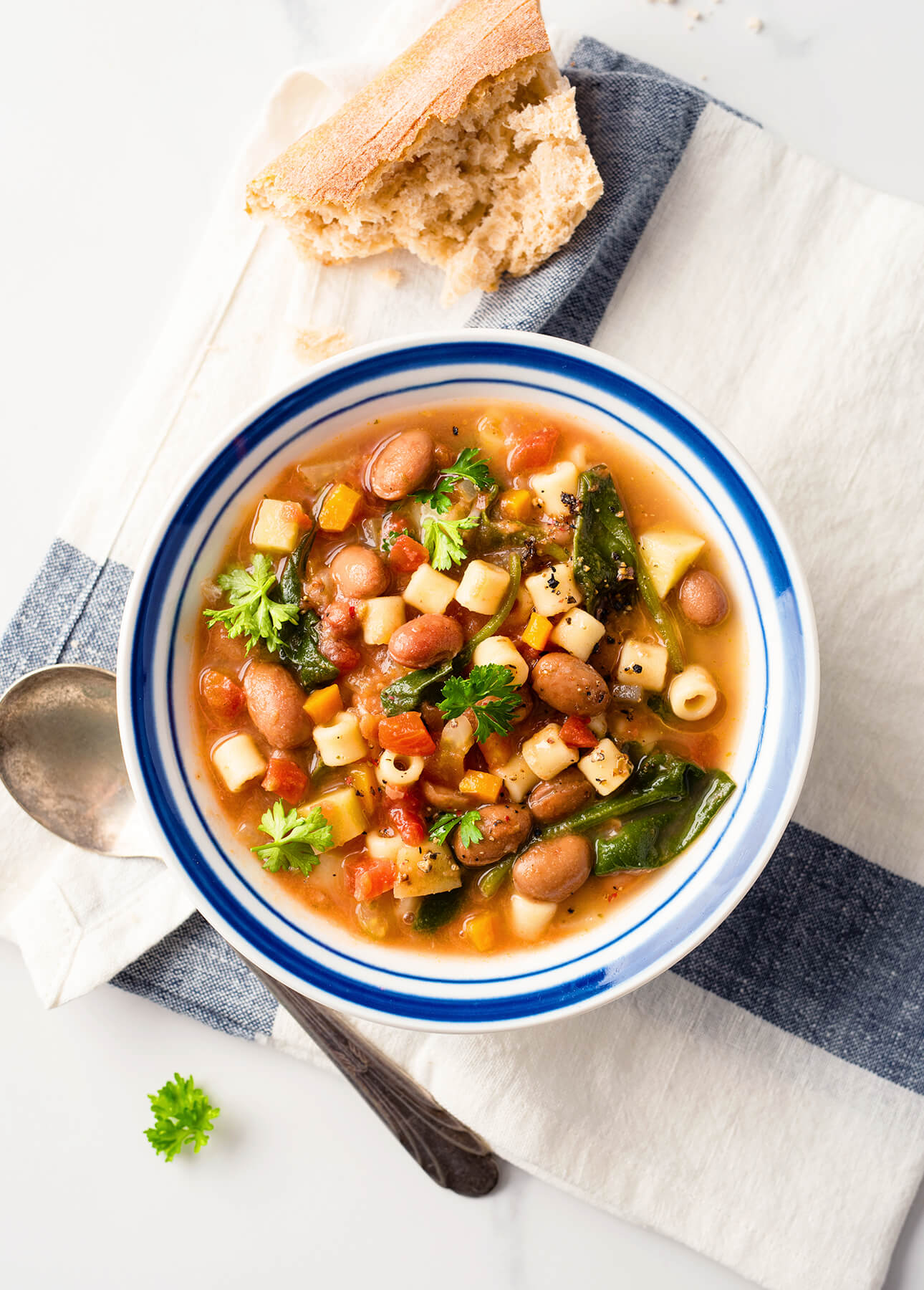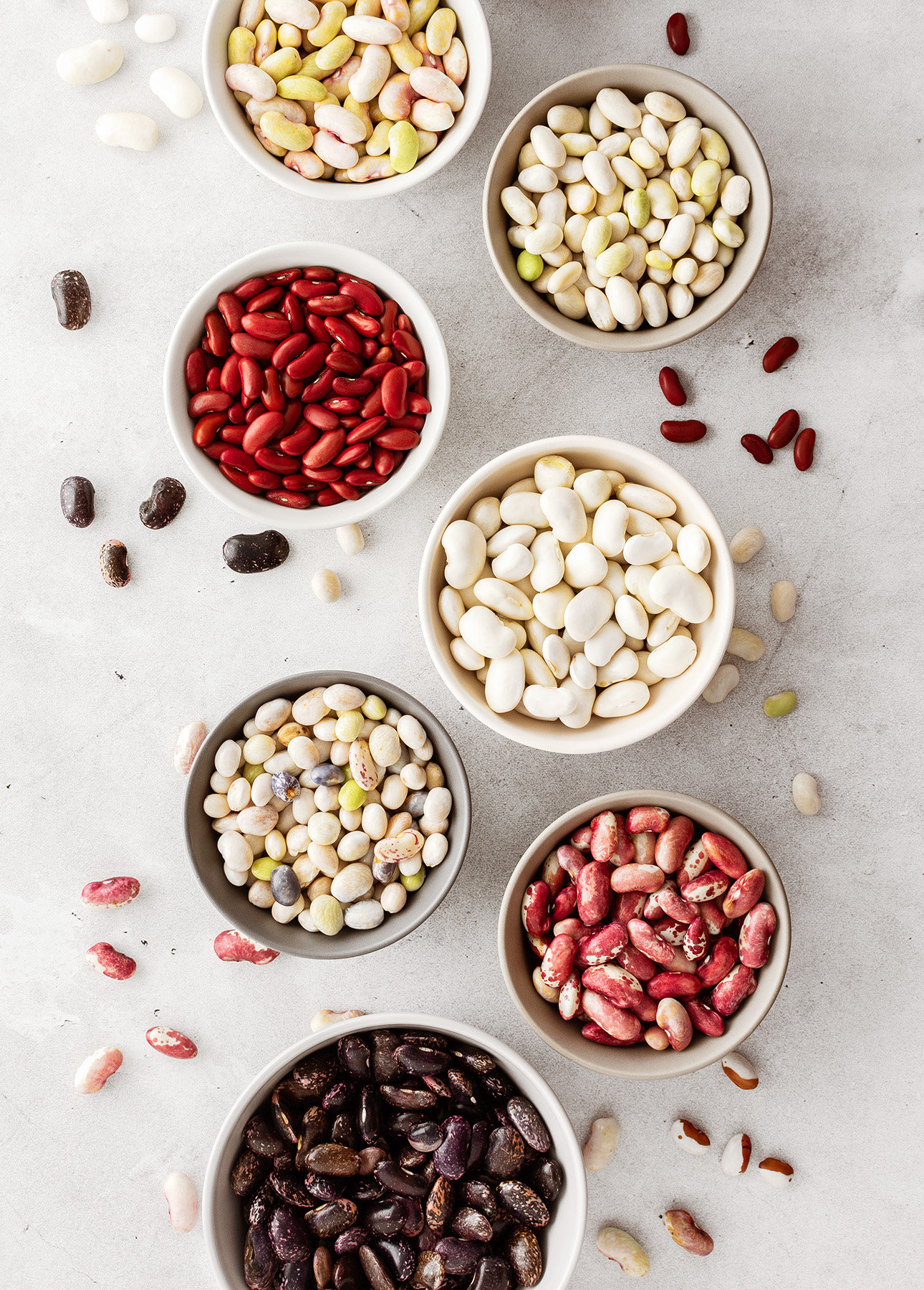This hearty winter minestrone is filled to the brim with vegetables, greens, and beans, which makes it a literal meal in a bowl. This is the soup you need to keep warm during the cooler season!

This post contains affiliate links. Full disclosure is at the bottom of the article.
I don’t think I could go through winter without soup. I live in a city where winters are long, snowy, and extremely cold, and though I’ve become an expert at layering (even when I stay inside all day) and I rely on my trusted heated footrest to keep me warm at my desk, sometimes the cold goes straight to my bones. The only things that can really help me in those times are bottomless coffees and piping hot bowls of soup.
From quick lentil soup, to cheesy French onion soup, to oh-so-satisfying bowls of ramen, I love ALL soups with my whole heart. Growing up, the soup my mom made most often was minestrone. The minestrone my mom made was rich with veggies, beans, and pasta, which made it super hearty and nutritious. I remember when I was younger, I wasn’t so fond of the beans in the soup, but my love for minestrone grew as I did, and now it’s one of my favorite wintertime bowls of comfort.
I’m not sure my mom knew it back then, but minestrone isn’t a single, specific soup. The name of the soup, minestrone, comes from the Italian term minestra, which means, quite simply, “soup.” In Italian, several terms are used to designate soup: from zuppa, for a simple tomato soup, to minestrone, which is the most substantial type of soup. Minestrone is filled with vegetables and sometimes includes rice or pasta. It is always very thick and stew-like.

There is no set recipe for minestrone. Indeed, minestrone was born out of necessity and was traditionally made out of whatever vegetables were available, with the addition of beans to make it more nutritious. This means you could name any vegetable soup a minestrone and adapt the ingredients you use to follow the seasons. A spring minestrone can be made with fresh peas, leeks, and fennel; a summer minestrone could include green beans, zucchini, and fresh tomatoes and could be served, perhaps, with a spoonful of homemade pesto on top; and a fall minestrone would for sure feature squash.
Winter minestrone is the heartiest variety of minestrone. Filled with vegetables that traditionally keep through the winter, such as onion, carrots, and potatoes, and enriched with bitter greens and beans, winter minestrone is a literal meal in a bowl. My recipe for winter minestrone is inspired by the soup my mom used to make, with the addition of a few clever flavor boosters, such as pancetta and parmesan rind.
Speaking of parmesan rind! If you buy wedges of Parmigiano-Reggiano, never ever throw away the rinds. Once you’ve used all the cheese, collect the rinds in a resealable plastic bag or an airtight container in the freezer to use later. A single piece of rind adds a ton of flavor and depth to minestrone. It’s a great way to upgrade store-bought beef, chicken, or vegetable broth!
Helpful Tips for Making Winter Minestrone

Can I freeze winter minestrone?
Winter minestrone is a soup you can and should make ahead of time. The flavors of this hearty soup fully develop after an overnight rest. So go on and make a double-batch: you can then freeze winter minestrone in portions and enjoy it for icy weeks or months to come.
Can I add other types of vegetables in winter minestrone?
Absolutely! Do as the Italians would and use whatever you have on hand. Frozen green peas, green beans, squash, and even broccoli or cauliflower florets would all make fine additions to winter minestrone.
Can I use dried beans instead of canned beans in winter minestrone?
Of course, you can! Soak 1/2 cup (125 ml) of dry beans of your choice overnight, then add them to a saucepan and cover with water. Bring to a boil, then simmer the beans until tender, 45 minutes to 2 hours, depending on the variety. Drain and add to the winter minestrone when the recipe says to add in the canned beans.

How can I make a vegan winter minestrone?
Easy peasy! Simply omit the pancetta and parmesan from the recipe, and make sure to use vegetable broth. Serve vegan winter minestrone sprinkled with nutritional yeast for a lovely boost in flavor.

Winter Minestrone
Ingredients
- 2 tbsp extra-virgin olive oil
- 2.5 oz diced pancetta (½ cup)
- 1 small onion, minced
- 1 celery rib, diced
- 1 large carrot, diced
- 2 cloves garlic, minced
- 2 bay leaves
- 4 cups beef stock
- 2 cups water
- 28 oz diced tomatoes (1 large can)
- 19 oz Roman (borlotti) beans, red kidney beans, or cannellini beans, rinsed and drained
- 1 medium-sized potato, cut into 1/2-in (1 cm) dice (about 1 cup/250 ml)
- 1 piece of Parmigiano-Reggiano rind (see note)
- 1 tsp kosher salt, or fine sea salt
- 1/2 tsp each: dried oregano and dried thyme
- Freshly ground black pepper
- 2 cups finely chopped kale, Swiss chard, or spinach
- 2.5 oz short dry pasta, such as ditalini (about ½ cup)
To serve (optional)
- Top quality extra-virgin olive oil
- Grated Parmigiano-Reggiano
- Fresh Italian parsley
Instructions
- In a large pot set over medium heat, heat the olive oil. Add the pancetta and fry until golden and crisp, about 5 minutes. Using a slotted spoon, transfer the pancetta to a plate. Add the onion, celery, and carrot to the pot and cook, stirring from time to time, until the vegetables are soft, about 10 minutes. Add the garlic and bay leaves and cook, stirring, for 1 minute more. Add the beef stock, water, diced tomatoes, beans, potato, Parmigiano-Reggiano rind, salt, oregano, thyme, and some black pepper. Stir to combine, then bring to a boil. Lower the heat and simmer for 20 minutes. Stir in the greens and dry pasta and keep cooking for 15 minutes.
- SERVING: Fish out the Parmigiano-Reggiano rind out of the soup. To make winter minestrone truly special, garnish each serving with a drizzle of olive oil, a dusting of Parmigiano-Reggiano, and a few leaves of Italian parsley. Serve with crusty bread.
- STORAGE: Divide the winter minestrone between airtight containers and refrigerate for up to 4 days, or freeze for up to 1 month.
- DAIRY-FREE OPTION: To make dairy-free minestrone, omit the parmesan from the recipe. Serve dairy-free winter minestrone sprinkled with nutritional yeast for a lovely boost in flavor.
- GLUTEN-FREE OPTION: To make gluten-free minestrone, use gluten-free short dry pasta.
- VEGAN OPTION: To make vegan winter minestrone, omit the pancetta and parmesan from the recipe, and make sure to use vegetable broth. Serve vegan winter minestrone sprinkled with nutritional yeast for a lovely boost in flavor.
Notes
This site is a participant in the Amazon Associates Program, an affiliate advertising program designed to provide a means for the site to earn fees by linking to Amazon and affiliated sites.
If you click on an affiliate link, I may earn advertising or referral fees if you make a purchase through such links, at no extra cost to you. This helps me creating new content for the blog–so thank you! Learn more about advertising on this site by reading my Disclosure Policy.
The post Hearty Winter Minestrone appeared first on Food Nouveau.

